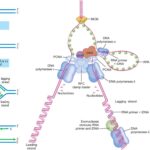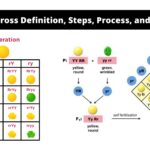IGCSE Biology 19 Views 1 Answers
Sourav PanLv 9November 14, 2024
Describe phototropism as a response in which parts of a plant grow towards or away from the direction of the light source
Describe phototropism as a response in which parts of a plant grow towards or away from the direction of the light source
Please login to save the post
Please login to submit an answer.
Sourav PanLv 9May 15, 2025
Phototropism: A Plant Response to Light
Phototropism is the growth response of plants to light, allowing them to optimize their exposure to sunlight for photosynthesis. This phenomenon enables different parts of the plant, particularly stems and leaves, to grow towards the light source (positive phototropism) or, in some cases, away from it (negative phototropism). Understanding phototropism is essential for appreciating how plants adapt to their environment and maximize their energy capture.
Key Concepts of Phototropism
- Types of Phototropism:
- Positive Phototropism: This occurs when plant stems and leaves grow towards a light source. This response is crucial for maximizing light absorption, which is vital for photosynthesis.
- Negative Phototropism: In some cases, certain plant parts may exhibit negative phototropism, growing away from light. This is less common but can occur in specific situations, such as in the case of some roots that grow deeper into the soil.
- Mechanism of Phototropic Response:
- Light Perception: Plants have photoreceptors called phytochromes and cryptochromes that detect light intensity and quality. These receptors are sensitive to different wavelengths of light, particularly red and blue light.
- Hormonal Regulation: The plant hormone auxin plays a central role in phototropism. When a plant is exposed to a directional light source:
- Auxin redistributes unevenly; it accumulates on the shaded side of the stem.
- This differential distribution leads to increased cell elongation on the shaded side compared to the illuminated side.
- Response Process:
- Perception of Light Direction: The plant’s tip senses the direction of light through its photoreceptors.
- Auxin Redistribution: In response to light, auxin moves away from the illuminated side towards the shaded side of the stem.
- Differential Growth: The higher concentration of auxin on the shaded side promotes greater cell elongation there, causing the stem to bend towards the light source.
Importance of Phototropism
- Maximizing Photosynthesis: By growing towards light, plants can optimize their leaf area exposed to sunlight, enhancing their ability to perform photosynthesis efficiently.
- Adaptation and Survival: Phototropism allows plants to adapt quickly to changes in their environment, such as competition with neighboring plants for light. This responsiveness can be crucial for survival in dense vegetation.
0
0 likes
- Share on Facebook
- Share on Twitter
- Share on LinkedIn
0 found this helpful out of 0 votes
Helpful: 0%
Helpful: 0%
Was this page helpful?




